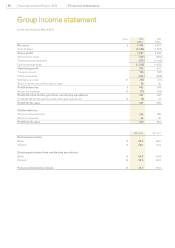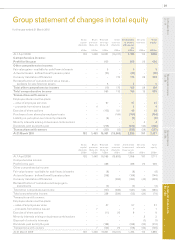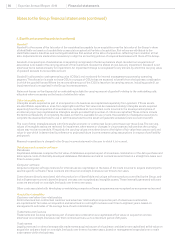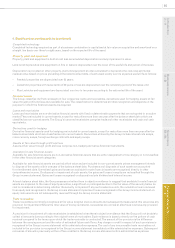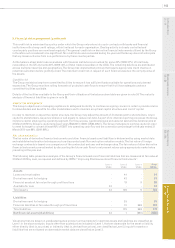Experian 2010 Annual Report Download - page 96
Download and view the complete annual report
Please find page 96 of the 2010 Experian annual report below. You can navigate through the pages in the report by either clicking on the pages listed below, or by using the keyword search tool below to find specific information within the annual report.
Experian Annual Report 2010 Financial statements94
Notes to the Group nancial statements (continued)
4. Signicant accounting policies (continued)
Goodwill
Goodwill is the excess of the fair value of the consideration payable for an acquisition over the fair value of the Group’s share
of identiable net assets of a subsidiary or associate acquired at the date of acquisition. Fair values are attributed to the
identiable assets, liabilities and contingent liabilities that existed at the date of acquisition, reecting their condition at that
date. Adjustments are made where necessary to align the accounting policies of acquired businesses with those of the Group.
Goodwill on acquisitions of subsidiaries is separately recognised in the Group balance sheet. Goodwill on acquisitions of
associates is included in the carrying amount of the investment. Goodwill is stated at cost less any impairment. Goodwill is not
amortised but is tested annually for impairment. An impairment charge is recognised for any amount by which the carrying value
of goodwill exceeds its recoverable amount.
Goodwill is allocated to cash generating units (‘CGUs’) and monitored for internal management purposes by operating
segment. The allocation is made to those CGUs or groups of CGUs that are expected to benet from the business combination
in which the goodwill arose. Where the recoverable amount of the CGU is less than its carrying amount, including goodwill, an
impairment loss is recognised in the Group income statement.
Gains and losses on the disposal of an undertaking include the carrying amount of goodwill relating to the undertaking sold,
allocated where necessary on the basis of relative fair value.
Other intangible assets
Intangible assets acquired as part of an acquisition of a business are capitalised separately from goodwill, if those assets
are identiable, separable or arise from legal rights and their fair value can be measured reliably. Intangible assets acquired
separately from the acquisition of a business are capitalised at cost. Certain costs incurred in the developmental phase of
an internal project are capitalised as intangible assets provided that a number of criteria are satised. These criteria include
the technical feasibility of completing the asset so that it is available for use or sale, the availability of adequate resources to
complete the development and to use or sell the asset and how the asset will generate probable future economic benet.
The cost of other intangible assets with nite useful economic or contractual lives is amortised over those lives. The carrying
values of intangible assets are reviewed for impairment when events or changes in circumstances indicate that the carrying
values may not be recoverable. If impaired, the carrying values are written down to the higher of fair value less costs to sell, and
value-in-use which is determined by reference to projected future income streams using assumptions in respect of protability
and growth.
Research expenditure is charged in the Group income statement in the year in which it is incurred.
Databases and computer software
Databases
Capitalised databases comprise the fair value of databases acquired as part of a business combination or the data purchase and
data capture costs of internally developed databases. Databases are held at cost and are amortised on a straight line basis over
three to seven years.
Computer software
Acquired computer software licences for internal use are capitalised on the basis of the costs incurred to acquire and bring into
use the specic software. These costs are amortised on a straight line basis over three to ten years.
Costs that are directly associated with the production of identiable and unique software products controlled by the Group, and
that will generate economic benets beyond one year, are recognised as intangible assets. These internally generated software
costs are amortised on a straight line basis over three to ten years.
Other costs associated with developing or maintaining computer software programmes are recognised as an expense as incurred.
Acquisition intangibles
Customer and advertiser relationships
Contractual and non-contractual customer and advertiser relationships acquired as part of a business combination
are capitalised at fair value on acquisition and amortised on a straight line basis over three to eighteen years, based on
management’s estimates of the average lives of such relationships.
Trademarks and licences
Trademarks and licences acquired as part of a business combination are capitalised at fair value on acquisition and are
amortised on a straight line basis over their contractual lives, up to a maximum period of 20 years.
Trade names
Legally protected or otherwise separable trade names acquired as part of a business combination are capitalised at fair value on
acquisition and amortised on a straight line basis over three to fourteen years, based on management’s expectations to retain
trade names within the business.




